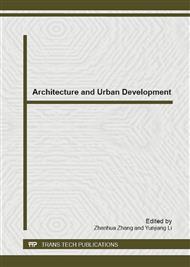p.400
p.404
p.409
p.413
p.420
p.425
p.432
p.438
p.444
A Study on Damage Properties of Explosive Internal-Blast of Concrete
Abstract:
Blast can cause serious loss of people live and property,and heavy damage on building structures. So, a numerical study on internal-blast-field characteristics and dynamic response of concrete by aluminized explosive was conducted. Moreover, three energy release models of aluminized explosive with combustion effects were compared and analyzed. The numerical study shows that the ignition and growth model is one three-form equation of reaction rate, which can describe unsteady detonation process of non-ideal explosives well. So, in this paper, the energy release model of aluminized explosive based on the Lee-Tarver rate equation was utilized, and an internal-blast dynamic model of concrete was established. The smoothed particle hydrodynamics (SPH) method was adopted to research the explosion field and damage effects of concrete, and provides an important way to evaluate the damage effect of internal-blast of the concrete.
Info:
Periodical:
Pages:
420-424
Citation:
Online since:
November 2012
Authors:
Keywords:
Price:
Сopyright:
© 2012 Trans Tech Publications Ltd. All Rights Reserved
Share:
Citation:


